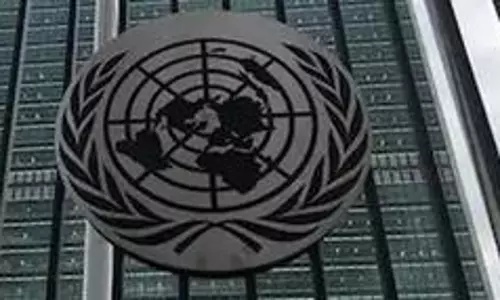
NASA prepares 'real Martians' to land and stand on Red Planet
text_fieldsWashington: As NASA is planning to send humans on Mars by 2030, its researchers back on the Earth are experimenting with astronauts for whom readapting to gravity and walking through the obstacle course after a deep space travel will not be an easy task.
Jacob Bloomberg, senior research scientist at NASA, and his team are analysing the balance control disturbances caused by gravity transitions.
They recently evaluated participants who had undergone body unloading, or not carrying one's own weight, after returning from space shuttle missions, space station expeditions or from bed rest studies of up to 70 days.
To test just how much body unloading affects balance and stability, Bloomberg has developed the Functional Task Test (FTT).
It identifies mission critical tasks that may impact astronauts' movement and performance immediately after gravity transitions. The FTT consists of seven functional and physiological tests.
"These tests are very operation-oriented and are related to different aspects of the mission and activities an astronaut would need to do after landing on the surface of Mars," Bloomberg said in a statement.
With balance control impairment comes hand-eye coordination problems, loss of postural stability or steadiness, and vision and perception issues.
Motion sickness is often a problem as well.
After landing, these impairments can make it difficult for crew members to begin necessary operations, such as walking from their landing craft to their habitat.
At the conclusion of the bed rest study, subjects were asked to perform the FTT.
Researchers found FTT functions that involved postural stability were the most difficult for participants.
"These results help us understand that astronauts, without countermeasures or balance training, may have difficulty maintaining balance control when landing on Mars, which has 62 percent lower gravity than Earth,” Bloomberg noted.
The team is studying a countermeasure approach for balance control problems after landing.
The counter-measures are done pre-flight and during flight, and the goal of this training is to help "train the brain to become more adaptable," Bloomberg pointed out.
Astronauts returning to the Earth after living aboard the International Space Station (ISS) have exhibited balance control problems, muscle weakness and cardiovascular deconditioning.
FTT also has benefits on the Earth. These tests can benefit the elderly who often have challenges standing or walking after being in bed for a few days, by improving their balance control and stability.
As NASA unlocks the key to balance training, astronauts will be able to land on Mars and stand and walk through their obstacle course with greater ease, the scientists noted.

















